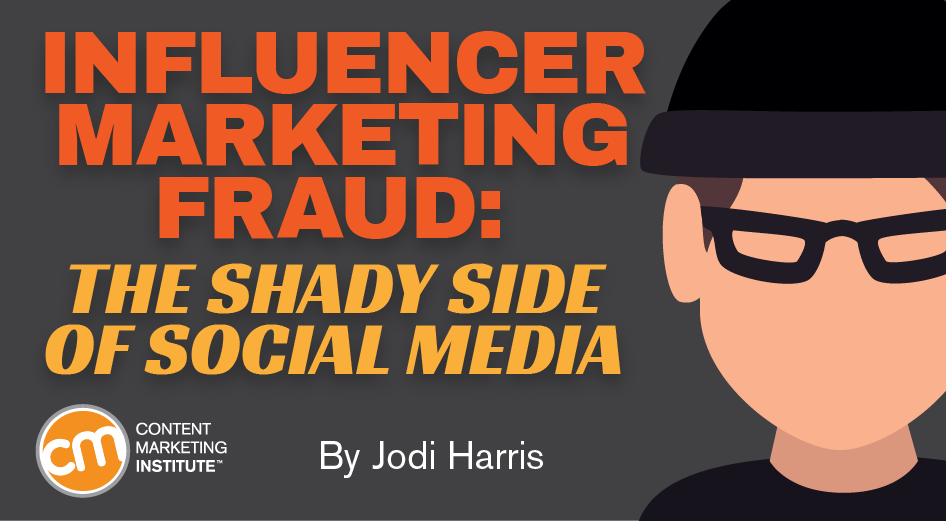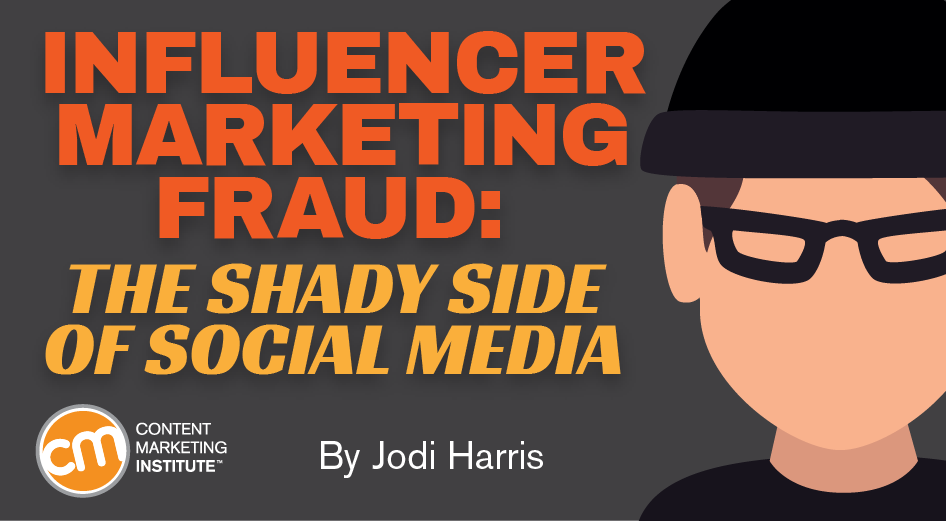The great thing about social media is you can become anyone you want to be. If your brand works with paid online influencers, you’re probably familiar with one of the technique’s biggest risk factors now: influencer fraud – a dilemma that occurs when paid tastemakers use artificially inflated follower numbers to increase their asking rate for engaging their audience on behalf of a brand. And, even if you aren’t paying popular social stars to help drive interest and increase reach, your content marketing activities still may not be immune to fraud and other influencer marketing pitfalls – as you’ll see from some recent news stories. Social media shakedown The magnitude of social media’s shady side is sending shock waves up and down the digital landscape – starting with the social networks themselves. Read: Facebook loses $120 billion in market cap after awful Q2 earnings Consider: For content marketers, follower reductions on your brand’s social profiles due to scrubbed accounts or mass exodus from the social channel can amount to millions in wasted ad spending. If consumers’ trust in social media remains in free fall, will the rest of the marketing economy be dragged down with it? Not if companies like Unilever have anything to say about it. Read: Cannabis Brands Want to Try Influencer Marketing, but Influencers Are Wary Consider: Even if your designated brand influencers aren’t tempted to work with risky businesses like MedMen yet, it doesn’t mean they aren’t engaging in other questionable activities, personal proclivities, or conflicting client relationships that could come back to haunt your brand if they come to light. Read: How to Spot Authentic (and Fake) Instagram Influencers Content conclusion Social media’s power and popularity enable practically anyone to build a public-facing persona, grow a following, and serve as a pitch person for your brand and its content. As a content strategy consultant, Jodi helps businesses evaluate their content needs and resources; build infrastructure and operations; and create compelling stories to be delivered across multiple media channels and platforms.

The great thing about social media is you can become anyone you want to be. The bad thing – at least from a brand’s perspective – is that you may not exist at all.
If your brand works with paid online influencers, you’re probably familiar with one of the technique’s biggest risk factors now: influencer fraud – a dilemma that occurs when paid tastemakers use artificially inflated follower numbers to increase their asking rate for engaging their audience on behalf of a brand.
What was once an isolated trend has exploded in recent years, to the point where the digital landscape is reeling from all that fake follower activity. To put the scope of the problem into perspective, up to 20% of mid-level influencers’ followers are likely fraudulent, according to a Points North Group study.
Regardless of whether an influencer partner intentionally participates in deceitful practices or may be an unwitting victim of a third-party effort to game the system, the cost to your business – and its content – remains the same: precious budget dollars wasted to curry favor with fake followers.
And, even if you aren’t paying popular social stars to help drive interest and increase reach, your content marketing activities still may not be immune to fraud and other influencer marketing pitfalls – as you’ll see from some recent news stories.
Social media shakedown
The magnitude of social media’s shady side is sending shock waves up and down the digital landscape – starting with the social networks themselves.
For example, a New York Times investigation recently revealed that 15% of Twitter users were likely automated accounts designed to simulate real people. Twitter responded by embarking on the “great purge of 2018,” shedding millions of locked accounts, which carried a higher likelihood of being fake. According to several sources, including Variety, Twitter’s purge resulted in significant follower count drops for some of the platform’s most powerful influencers – including an estimated 7.5 million from its @Twitter account.
Read: Big Twitter Accounts See Follower Numbers Drop After Fake-User Purge
Trickle-down marketing economics
The realization that their faith in influencer endorsements may have been misplaced has many consumers feeling swindled by their favorite social networks – Facebook chief among them. When news of Facebook’s bot problem surfaced, it seemed likely that eroded trust would drive scorned users off the site. Those chickens may just have come home to roost: TechCrunch and MarketWatch, have cited growth and engagement declines as contributors to Facebook’s recent market cap drop of $123 billion – more than most startups or public companies are ever worth.
Read: Facebook loses $120 billion in market cap after awful Q2 earnings
Consider: For content marketers, follower reductions on your brand’s social profiles due to scrubbed accounts or mass exodus from the social channel can amount to millions in wasted ad spending. CMI founder Joe Pulizzi has pointed out the fragile nature of marketing on “rented” social media lands, citing the likelihood of these channels unexpectedly changing their rules and…

COMMENTS